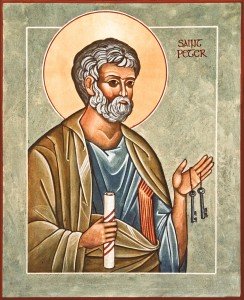The first letter of Peter is distinctive for a number of reasons. It is one of only two documents in the New Testament (NT) that uses the word “Christian”. It is the only document in addition to John that uses “born again”. This does not reduce the power or significance of the phrase. What is means is widespread in Christianity very early in history. It has the same meaning as Paul’s “dying and rising” with Christ, that is dying to an old way of life and being raised into a new way of life. But the specific phrase is found only in this letter and in John.
This letter also uses a distinctive metaphor for Jesus. He is “a living stone”. In John, Jesus is the “light of the world,” the “bread of life,” the “gate for the sheep,” the “true vine,” and so forth. In Hebrews, Christ is the “great high priest” and “sacrifice.” Here He is a “living stone,” indeed the “cornerstone” of “a spiritual house.” The author then calls the recipients to be “living stones” in “a spiritual house” and to be “a holy priesthood” offering “spiritual sacrifices”. The important image of the community as priests leads to one of the best-known passes in this letter: But you are a chosen race, a royal priesthood, a holy nation, God’s own people, in order that you may proclaim the mighty acts of Him who called you out of darkness into His marvelous light.
The letter’s advice in a time of persecution is striking. The author instructs his readers how to respond to those who were persecuting them: “Do not fear what they fear, and do not be intimidated”. The letter suggests that their persecutors operated out of fear; they were not to be intimidated by them. Instead, they were to “cast all their anxiety” on God. “Fear not – do not be afraid” is the constant counsel of the Bible, Old and New alike. Thus, though this letter is from the early second century, it preserves much that is authentically Jewish and Christian.
Unlike the Epistle of James, First Peter presents the moral exhortation which is its dominant feature in close relationship to Christian doctrine: the Trinity of persons in God; the redemptive value of Jesus’ death and resurrection; the sinfulness of man, whom God destined to be holy. Some scholars are of the opinion that 1 Peter is taken substantially from an early Christian baptismal liturgy. Whether this view is correct or not, the passages in question are among the clearest expositions on the meaning of Christian baptism to be found in the NT.
It is well worth your time and effort to read this five chapter letter. You won’t regret it.

